Quick filters:
Babinski reflex Stock Photos and Images
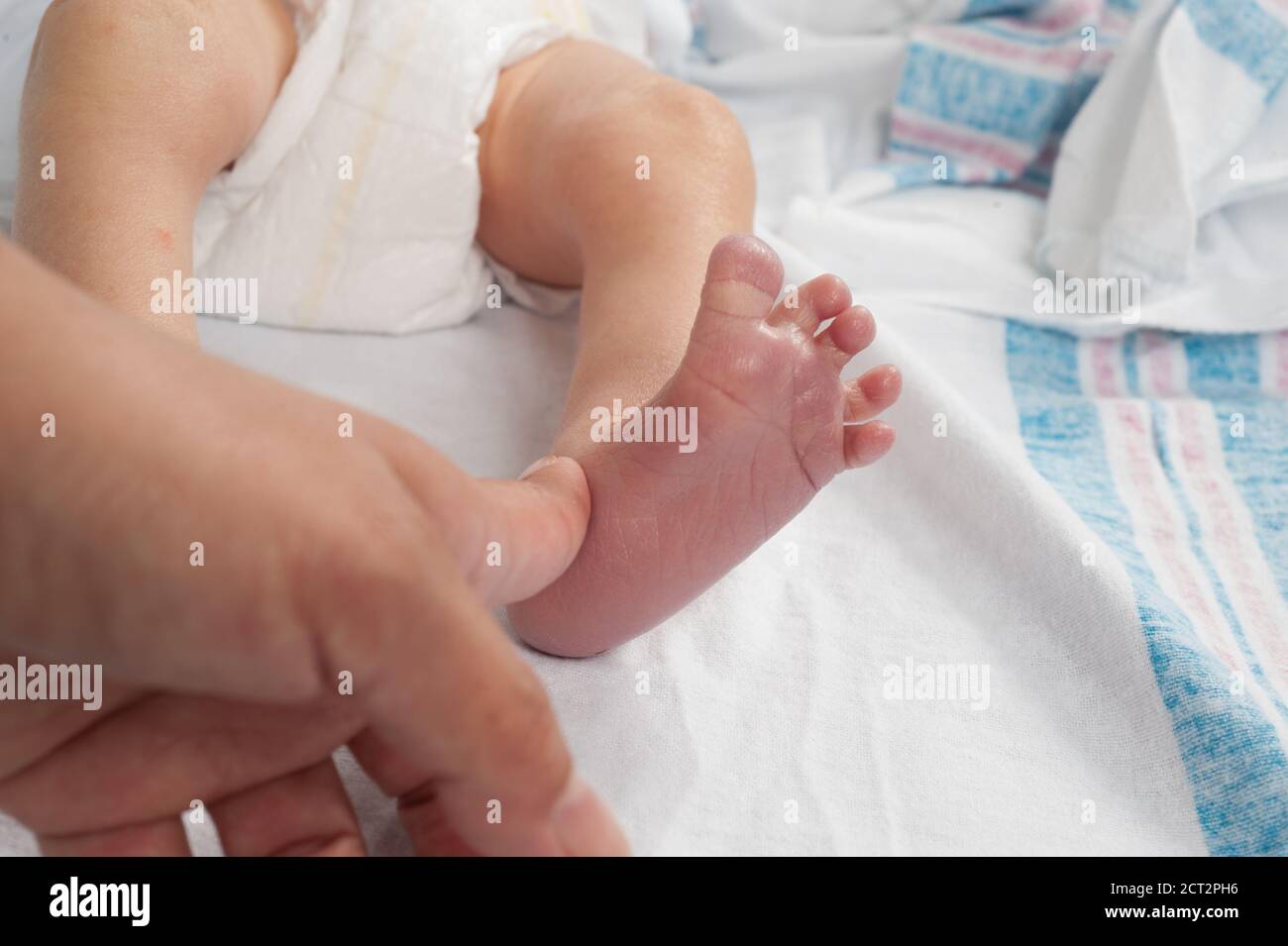 3 day old newborn baby boy closeup of newborn reflex Babinski reflex toes separating when sole of foot is stroked Stock Photohttps://www.alamy.com/image-license-details/?v=1https://www.alamy.com/3-day-old-newborn-baby-boy-closeup-of-newborn-reflex-babinski-reflex-toes-separating-when-sole-of-foot-is-stroked-image376231106.html
3 day old newborn baby boy closeup of newborn reflex Babinski reflex toes separating when sole of foot is stroked Stock Photohttps://www.alamy.com/image-license-details/?v=1https://www.alamy.com/3-day-old-newborn-baby-boy-closeup-of-newborn-reflex-babinski-reflex-toes-separating-when-sole-of-foot-is-stroked-image376231106.htmlRM2CT2PH6–3 day old newborn baby boy closeup of newborn reflex Babinski reflex toes separating when sole of foot is stroked
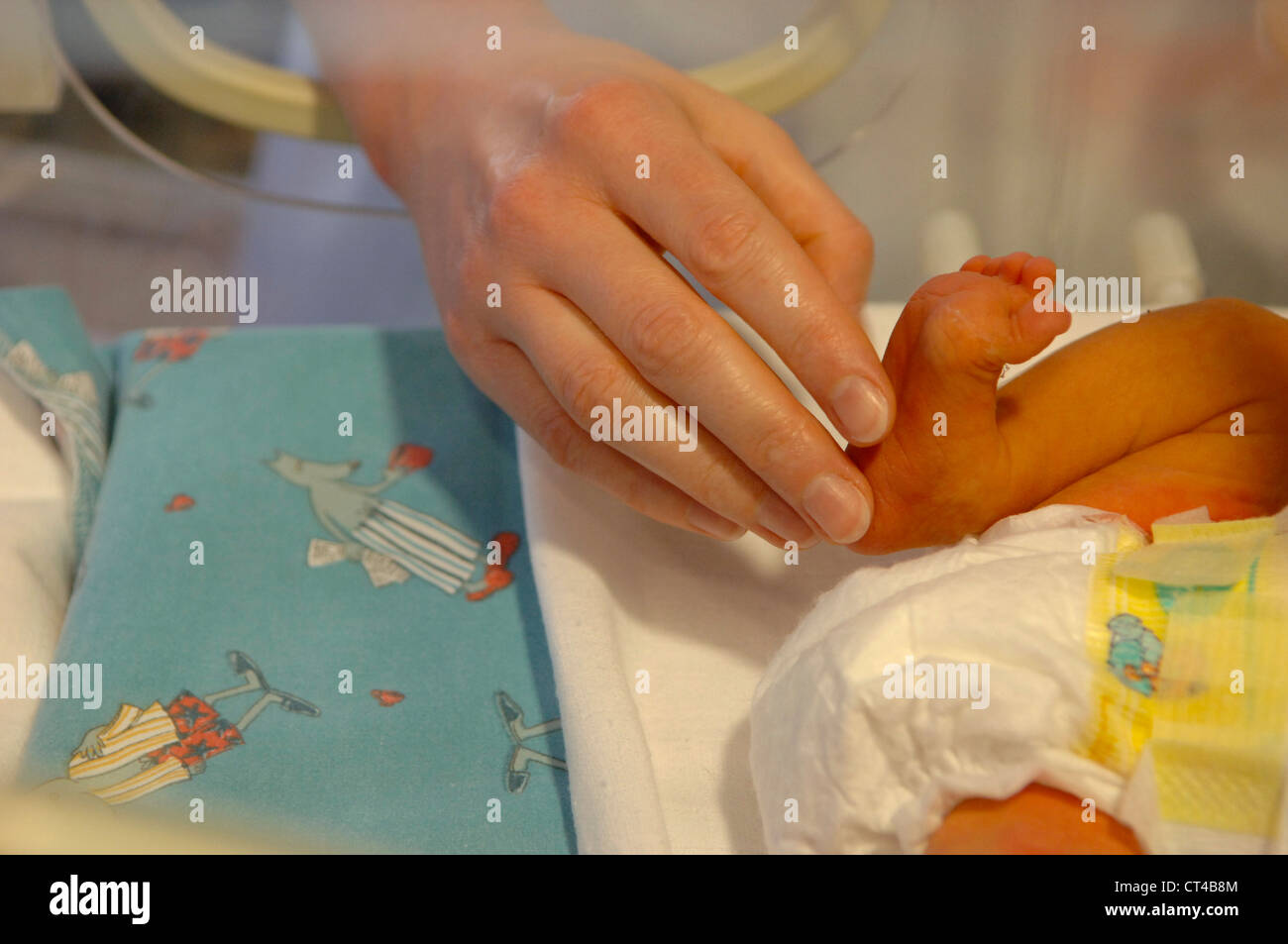 PREMATURE BABY REFLEX Stock Photohttps://www.alamy.com/image-license-details/?v=1https://www.alamy.com/stock-photo-premature-baby-reflex-49269156.html
PREMATURE BABY REFLEX Stock Photohttps://www.alamy.com/image-license-details/?v=1https://www.alamy.com/stock-photo-premature-baby-reflex-49269156.htmlRMCT4B8M–PREMATURE BABY REFLEX
 3 week old newborn baby boy reflex Babinski separating toes after sole of foot is stroked Stock Photohttps://www.alamy.com/image-license-details/?v=1https://www.alamy.com/3-week-old-newborn-baby-boy-reflex-babinski-separating-toes-after-sole-of-foot-is-stroked-image376231155.html
3 week old newborn baby boy reflex Babinski separating toes after sole of foot is stroked Stock Photohttps://www.alamy.com/image-license-details/?v=1https://www.alamy.com/3-week-old-newborn-baby-boy-reflex-babinski-separating-toes-after-sole-of-foot-is-stroked-image376231155.htmlRM2CT2PJY–3 week old newborn baby boy reflex Babinski separating toes after sole of foot is stroked
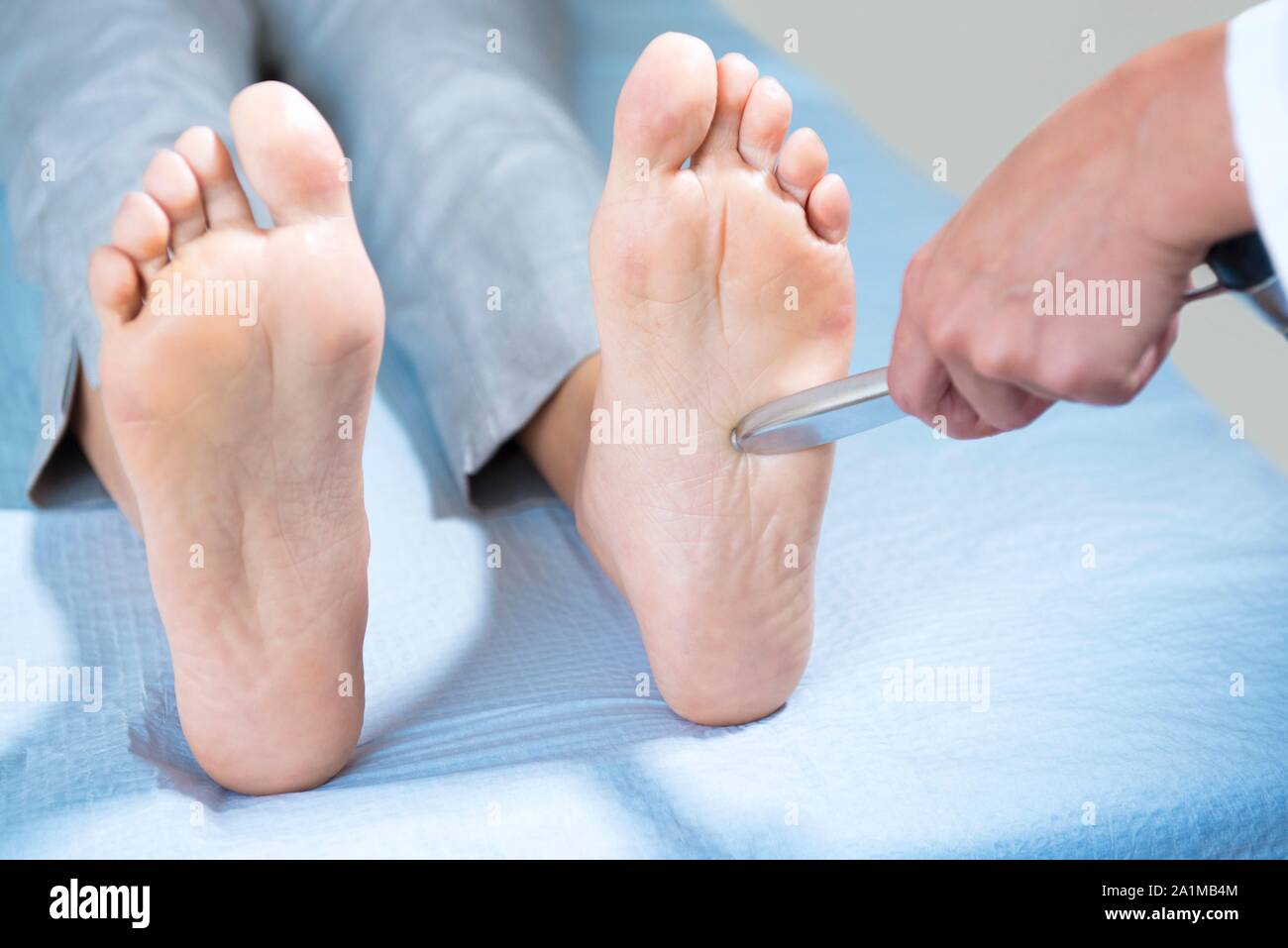 Female doctor testing patient's plantar reflex. Stock Photohttps://www.alamy.com/image-license-details/?v=1https://www.alamy.com/female-doctor-testing-patients-plantar-reflex-image328059444.html
Female doctor testing patient's plantar reflex. Stock Photohttps://www.alamy.com/image-license-details/?v=1https://www.alamy.com/female-doctor-testing-patients-plantar-reflex-image328059444.htmlRF2A1MB4M–Female doctor testing patient's plantar reflex.
 Newborn baby girl 12 days old closeup of foot reflex Babinski mother strokes side of foot and toes fan out Stock Photohttps://www.alamy.com/image-license-details/?v=1https://www.alamy.com/newborn-baby-girl-12-days-old-closeup-of-foot-reflex-babinski-mother-strokes-side-of-foot-and-toes-fan-out-image376230940.html
Newborn baby girl 12 days old closeup of foot reflex Babinski mother strokes side of foot and toes fan out Stock Photohttps://www.alamy.com/image-license-details/?v=1https://www.alamy.com/newborn-baby-girl-12-days-old-closeup-of-foot-reflex-babinski-mother-strokes-side-of-foot-and-toes-fan-out-image376230940.htmlRM2CT2PB8–Newborn baby girl 12 days old closeup of foot reflex Babinski mother strokes side of foot and toes fan out
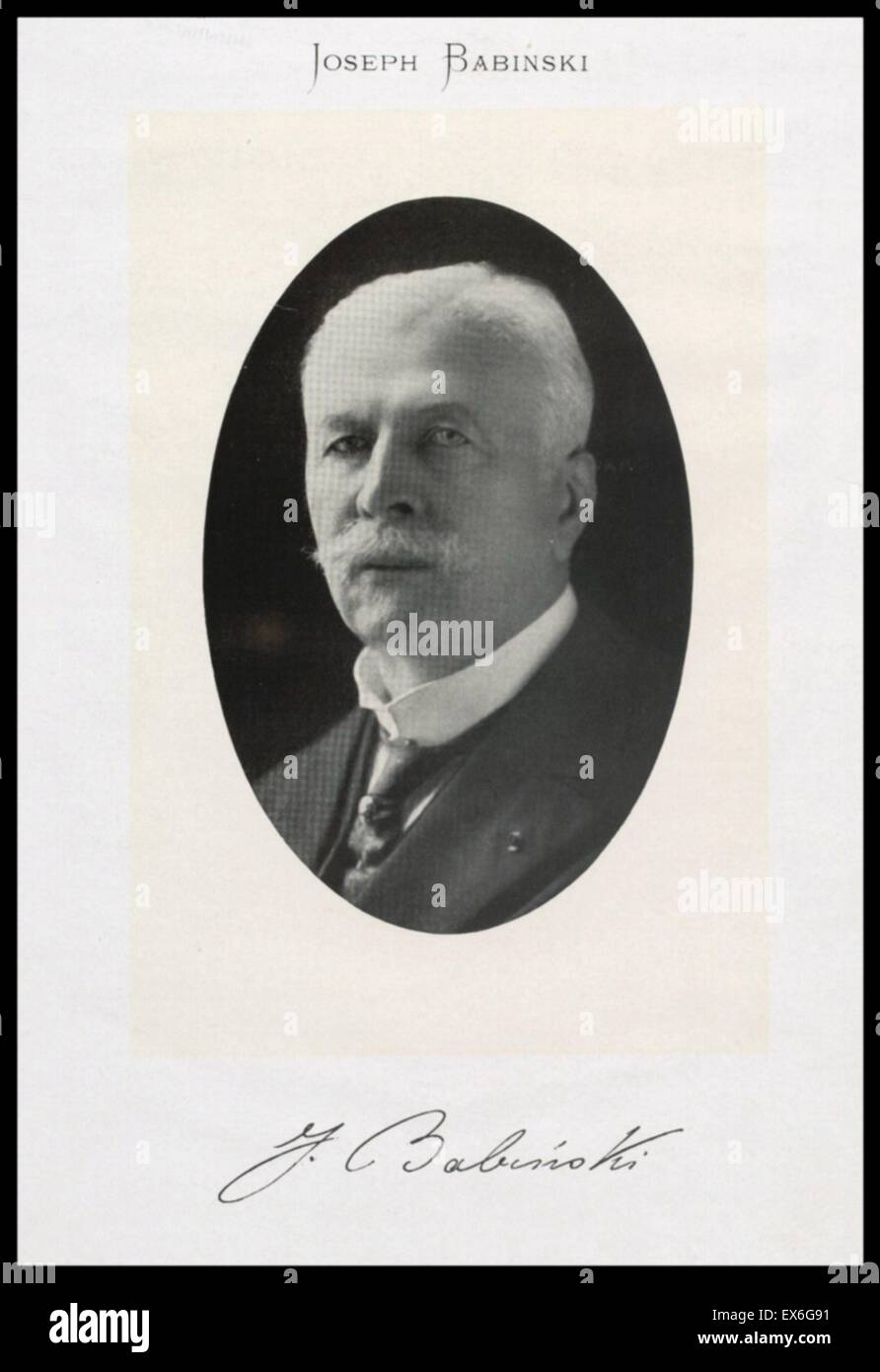 Joseph Jules François Félix Babinski (17 November 1857 – 29 October 1932) was a French neurologist of Polish descent. He is best known for his 1896 description of the Babinski sign, a pathological plantar reflex indicative of corticospinal tract damage Stock Photohttps://www.alamy.com/image-license-details/?v=1https://www.alamy.com/stock-photo-joseph-jules-franois-flix-babinski-17-november-1857-29-october-1932-84967037.html
Joseph Jules François Félix Babinski (17 November 1857 – 29 October 1932) was a French neurologist of Polish descent. He is best known for his 1896 description of the Babinski sign, a pathological plantar reflex indicative of corticospinal tract damage Stock Photohttps://www.alamy.com/image-license-details/?v=1https://www.alamy.com/stock-photo-joseph-jules-franois-flix-babinski-17-november-1857-29-october-1932-84967037.htmlRMEX6G91–Joseph Jules François Félix Babinski (17 November 1857 – 29 October 1932) was a French neurologist of Polish descent. He is best known for his 1896 description of the Babinski sign, a pathological plantar reflex indicative of corticospinal tract damage
 10 day old newborn baby girl closeup of foot reflex Babinski adult hand touching side of foot causing toes to fan out Stock Photohttps://www.alamy.com/image-license-details/?v=1https://www.alamy.com/10-day-old-newborn-baby-girl-closeup-of-foot-reflex-babinski-adult-hand-touching-side-of-foot-causing-toes-to-fan-out-image376231376.html
10 day old newborn baby girl closeup of foot reflex Babinski adult hand touching side of foot causing toes to fan out Stock Photohttps://www.alamy.com/image-license-details/?v=1https://www.alamy.com/10-day-old-newborn-baby-girl-closeup-of-foot-reflex-babinski-adult-hand-touching-side-of-foot-causing-toes-to-fan-out-image376231376.htmlRM2CT2PXT–10 day old newborn baby girl closeup of foot reflex Babinski adult hand touching side of foot causing toes to fan out
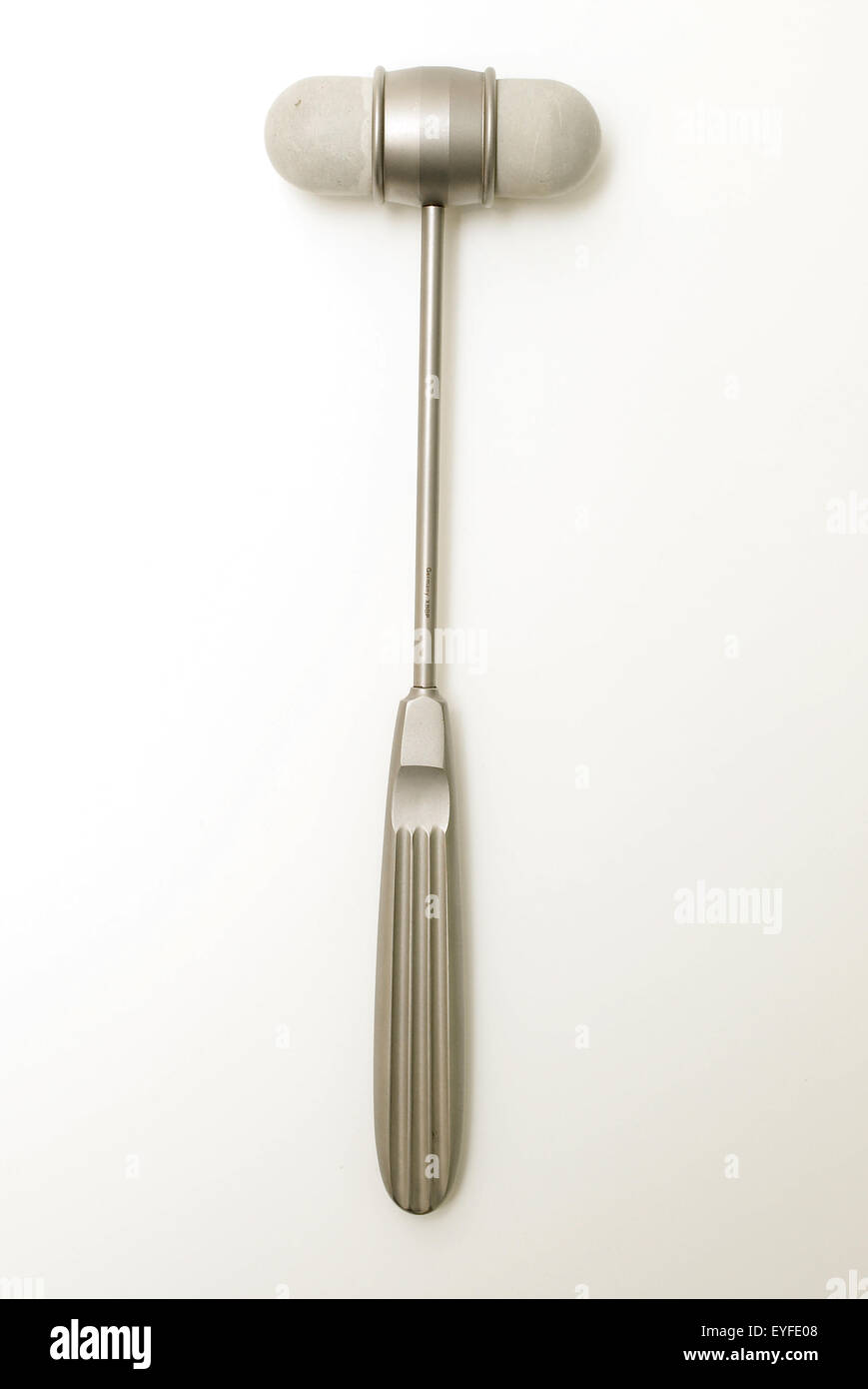 The Babinski Buck reflex hammer designed in 1912 is a medical instrument used by practitioners to test deep tendon reflexes. Testing for reflexes is an important part of the neurological physical examination in order to detect abnormalities in the central or peripheral nervous system. Stock Photohttps://www.alamy.com/image-license-details/?v=1https://www.alamy.com/stock-photo-the-babinski-buck-reflex-hammer-designed-in-1912-is-a-medical-instrument-85777448.html
The Babinski Buck reflex hammer designed in 1912 is a medical instrument used by practitioners to test deep tendon reflexes. Testing for reflexes is an important part of the neurological physical examination in order to detect abnormalities in the central or peripheral nervous system. Stock Photohttps://www.alamy.com/image-license-details/?v=1https://www.alamy.com/stock-photo-the-babinski-buck-reflex-hammer-designed-in-1912-is-a-medical-instrument-85777448.htmlRMEYFE08–The Babinski Buck reflex hammer designed in 1912 is a medical instrument used by practitioners to test deep tendon reflexes. Testing for reflexes is an important part of the neurological physical examination in order to detect abnormalities in the central or peripheral nervous system.
 Doctor checking the Babinski plantar reflex, Physiotherapy medical center, Donostia, San Sebastian, Gipuzkoa, Basque Country, Spain Stock Photohttps://www.alamy.com/image-license-details/?v=1https://www.alamy.com/doctor-checking-the-babinski-plantar-reflex-physiotherapy-medical-center-donostia-san-sebastian-gipuzkoa-basque-country-spain-image604409321.html
Doctor checking the Babinski plantar reflex, Physiotherapy medical center, Donostia, San Sebastian, Gipuzkoa, Basque Country, Spain Stock Photohttps://www.alamy.com/image-license-details/?v=1https://www.alamy.com/doctor-checking-the-babinski-plantar-reflex-physiotherapy-medical-center-donostia-san-sebastian-gipuzkoa-basque-country-spain-image604409321.htmlRF2X39675–Doctor checking the Babinski plantar reflex, Physiotherapy medical center, Donostia, San Sebastian, Gipuzkoa, Basque Country, Spain
 Father holding newborn baby Stock Photohttps://www.alamy.com/image-license-details/?v=1https://www.alamy.com/father-holding-newborn-baby-image607429606.html
Father holding newborn baby Stock Photohttps://www.alamy.com/image-license-details/?v=1https://www.alamy.com/father-holding-newborn-baby-image607429606.htmlRM2X86PJE–Father holding newborn baby
 Joseph Babinski (1857 – 1932) French neurologist of Polish descent. He is best known for his 1896 description of the Babinski sign, a pathological plantar reflex indicative of corticospinal tract damage. Stock Photohttps://www.alamy.com/image-license-details/?v=1https://www.alamy.com/stock-photo-joseph-babinski-1857-1932-french-neurologist-of-polish-descent-he-76395170.html
Joseph Babinski (1857 – 1932) French neurologist of Polish descent. He is best known for his 1896 description of the Babinski sign, a pathological plantar reflex indicative of corticospinal tract damage. Stock Photohttps://www.alamy.com/image-license-details/?v=1https://www.alamy.com/stock-photo-joseph-babinski-1857-1932-french-neurologist-of-polish-descent-he-76395170.htmlRMEC82PX–Joseph Babinski (1857 – 1932) French neurologist of Polish descent. He is best known for his 1896 description of the Babinski sign, a pathological plantar reflex indicative of corticospinal tract damage.
 Joseph Babinski (1857 – 1932) French neurologist of Polish descent. He is best known for his 1896 description of the Babinski sign, a pathological plantar reflex indicative of corticospinal tract damage. Stock Photohttps://www.alamy.com/image-license-details/?v=1https://www.alamy.com/joseph-babinski-1857-1932-french-neurologist-of-polish-descent-he-is-best-known-for-his-1896-description-of-the-babinski-sign-a-pathological-plantar-reflex-indicative-of-corticospinal-tract-damage-image210408167.html
Joseph Babinski (1857 – 1932) French neurologist of Polish descent. He is best known for his 1896 description of the Babinski sign, a pathological plantar reflex indicative of corticospinal tract damage. Stock Photohttps://www.alamy.com/image-license-details/?v=1https://www.alamy.com/joseph-babinski-1857-1932-french-neurologist-of-polish-descent-he-is-best-known-for-his-1896-description-of-the-babinski-sign-a-pathological-plantar-reflex-indicative-of-corticospinal-tract-damage-image210408167.htmlRMP68WNB–Joseph Babinski (1857 – 1932) French neurologist of Polish descent. He is best known for his 1896 description of the Babinski sign, a pathological plantar reflex indicative of corticospinal tract damage.
 Joseph Babinski (1857 – 1932) French neurologist of Polish descent. He is best known for his 1896 description of the Babinski sign, a pathological plantar reflex indicative of corticospinal tract damage. Stock Photohttps://www.alamy.com/image-license-details/?v=1https://www.alamy.com/stock-photo-joseph-babinski-1857-1932-french-neurologist-of-polish-descent-he-76395163.html
Joseph Babinski (1857 – 1932) French neurologist of Polish descent. He is best known for his 1896 description of the Babinski sign, a pathological plantar reflex indicative of corticospinal tract damage. Stock Photohttps://www.alamy.com/image-license-details/?v=1https://www.alamy.com/stock-photo-joseph-babinski-1857-1932-french-neurologist-of-polish-descent-he-76395163.htmlRMEC82PK–Joseph Babinski (1857 – 1932) French neurologist of Polish descent. He is best known for his 1896 description of the Babinski sign, a pathological plantar reflex indicative of corticospinal tract damage.
 Joseph Babinski (1857 – 1932) French neurologist of Polish descent. He is best known for his 1896 description of the Babinski sign, a pathological plantar reflex indicative of corticospinal tract damage. Stock Photohttps://www.alamy.com/image-license-details/?v=1https://www.alamy.com/joseph-babinski-1857-1932-french-neurologist-of-polish-descent-he-is-best-known-for-his-1896-description-of-the-babinski-sign-a-pathological-plantar-reflex-indicative-of-corticospinal-tract-damage-image210408163.html
Joseph Babinski (1857 – 1932) French neurologist of Polish descent. He is best known for his 1896 description of the Babinski sign, a pathological plantar reflex indicative of corticospinal tract damage. Stock Photohttps://www.alamy.com/image-license-details/?v=1https://www.alamy.com/joseph-babinski-1857-1932-french-neurologist-of-polish-descent-he-is-best-known-for-his-1896-description-of-the-babinski-sign-a-pathological-plantar-reflex-indicative-of-corticospinal-tract-damage-image210408163.htmlRMP68WN7–Joseph Babinski (1857 – 1932) French neurologist of Polish descent. He is best known for his 1896 description of the Babinski sign, a pathological plantar reflex indicative of corticospinal tract damage.
 Doctor checking the Babinski plantar reflex, Physiotherapy medical center, Donostia, San Sebastian, Gipuzkoa, Basque Country, Spain. Stock Photohttps://www.alamy.com/image-license-details/?v=1https://www.alamy.com/doctor-checking-the-babinski-plantar-reflex-physiotherapy-medical-center-donostia-san-sebastian-gipuzkoa-basque-country-spain-image602211962.html
Doctor checking the Babinski plantar reflex, Physiotherapy medical center, Donostia, San Sebastian, Gipuzkoa, Basque Country, Spain. Stock Photohttps://www.alamy.com/image-license-details/?v=1https://www.alamy.com/doctor-checking-the-babinski-plantar-reflex-physiotherapy-medical-center-donostia-san-sebastian-gipuzkoa-basque-country-spain-image602211962.htmlRM2WYN3E2–Doctor checking the Babinski plantar reflex, Physiotherapy medical center, Donostia, San Sebastian, Gipuzkoa, Basque Country, Spain.
 . The diseases of infancy and childhood : designed for the use of students and practitioners of medicine. as for three months underconstant observation. In other cases the vomiting is rapidly fol-lowed by paralytic symptoms such as ptosis and facial paralysis on 422 THE SPECIFIC INFECTIOUS DISEASES the same side. There are no convulsions and no cry, but there isrigidity of the neck and extremities; one patellar reflex may be absent.The Kernig symptom and Babinski reflex are present in the majorityof cases m children. The very rapid and fatal cases of tuberculous meningitis havebeen described b Stock Photohttps://www.alamy.com/image-license-details/?v=1https://www.alamy.com/the-diseases-of-infancy-and-childhood-designed-for-the-use-of-students-and-practitioners-of-medicine-as-for-three-months-underconstant-observation-in-other-cases-the-vomiting-is-rapidly-fol-lowed-by-paralytic-symptoms-such-as-ptosis-and-facial-paralysis-on-422-the-specific-infectious-diseases-the-same-side-there-are-no-convulsions-and-no-cry-but-there-isrigidity-of-the-neck-and-extremities-one-patellar-reflex-may-be-absentthe-kernig-symptom-and-babinski-reflex-are-present-in-the-majorityof-cases-m-children-the-very-rapid-and-fatal-cases-of-tuberculous-meningitis-havebeen-described-b-image336995598.html
. The diseases of infancy and childhood : designed for the use of students and practitioners of medicine. as for three months underconstant observation. In other cases the vomiting is rapidly fol-lowed by paralytic symptoms such as ptosis and facial paralysis on 422 THE SPECIFIC INFECTIOUS DISEASES the same side. There are no convulsions and no cry, but there isrigidity of the neck and extremities; one patellar reflex may be absent.The Kernig symptom and Babinski reflex are present in the majorityof cases m children. The very rapid and fatal cases of tuberculous meningitis havebeen described b Stock Photohttps://www.alamy.com/image-license-details/?v=1https://www.alamy.com/the-diseases-of-infancy-and-childhood-designed-for-the-use-of-students-and-practitioners-of-medicine-as-for-three-months-underconstant-observation-in-other-cases-the-vomiting-is-rapidly-fol-lowed-by-paralytic-symptoms-such-as-ptosis-and-facial-paralysis-on-422-the-specific-infectious-diseases-the-same-side-there-are-no-convulsions-and-no-cry-but-there-isrigidity-of-the-neck-and-extremities-one-patellar-reflex-may-be-absentthe-kernig-symptom-and-babinski-reflex-are-present-in-the-majorityof-cases-m-children-the-very-rapid-and-fatal-cases-of-tuberculous-meningitis-havebeen-described-b-image336995598.htmlRM2AG7D92–. The diseases of infancy and childhood : designed for the use of students and practitioners of medicine. as for three months underconstant observation. In other cases the vomiting is rapidly fol-lowed by paralytic symptoms such as ptosis and facial paralysis on 422 THE SPECIFIC INFECTIOUS DISEASES the same side. There are no convulsions and no cry, but there isrigidity of the neck and extremities; one patellar reflex may be absent.The Kernig symptom and Babinski reflex are present in the majorityof cases m children. The very rapid and fatal cases of tuberculous meningitis havebeen described b
 PREMATURE BABY REFLEX Stock Photohttps://www.alamy.com/image-license-details/?v=1https://www.alamy.com/stock-photo-premature-baby-reflex-49269128.html
PREMATURE BABY REFLEX Stock Photohttps://www.alamy.com/image-license-details/?v=1https://www.alamy.com/stock-photo-premature-baby-reflex-49269128.htmlRMCT4B7M–PREMATURE BABY REFLEX
 PODIATRY CONSULTATION FOR WOMAN Stock Photohttps://www.alamy.com/image-license-details/?v=1https://www.alamy.com/stock-photo-podiatry-consultation-for-woman-53860643.html
PODIATRY CONSULTATION FOR WOMAN Stock Photohttps://www.alamy.com/image-license-details/?v=1https://www.alamy.com/stock-photo-podiatry-consultation-for-woman-53860643.htmlRMD3HFPB–PODIATRY CONSULTATION FOR WOMAN
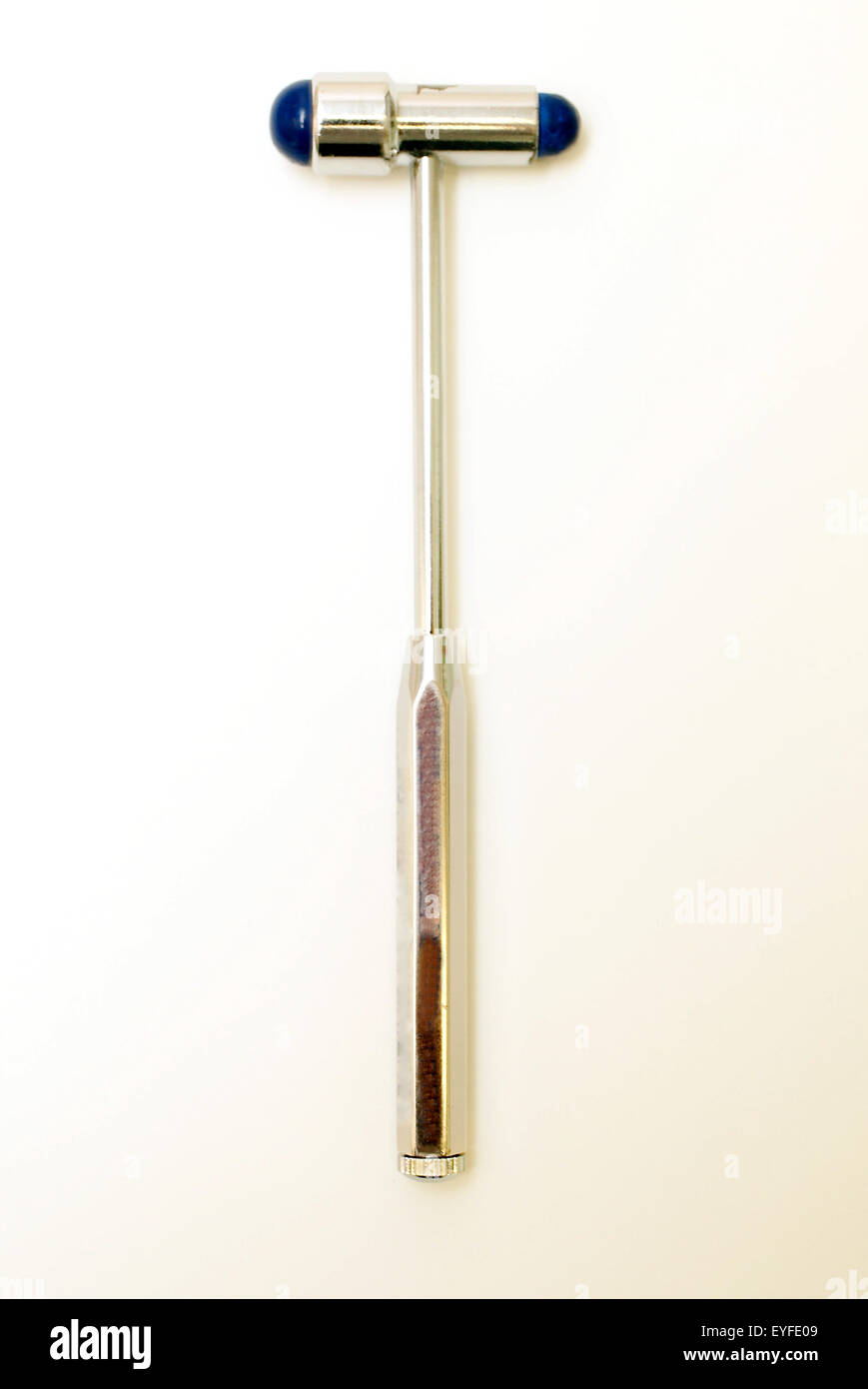 The Babinski Buck reflex hammer designed in 1912 is a medical instrument used by practitioners to test deep tendon reflexes. Testing for reflexes is an important part of the neurological physical examination in order to detect abnormalities in the central or peripheral nervous system. Stock Photohttps://www.alamy.com/image-license-details/?v=1https://www.alamy.com/stock-photo-the-babinski-buck-reflex-hammer-designed-in-1912-is-a-medical-instrument-85777449.html
The Babinski Buck reflex hammer designed in 1912 is a medical instrument used by practitioners to test deep tendon reflexes. Testing for reflexes is an important part of the neurological physical examination in order to detect abnormalities in the central or peripheral nervous system. Stock Photohttps://www.alamy.com/image-license-details/?v=1https://www.alamy.com/stock-photo-the-babinski-buck-reflex-hammer-designed-in-1912-is-a-medical-instrument-85777449.htmlRMEYFE09–The Babinski Buck reflex hammer designed in 1912 is a medical instrument used by practitioners to test deep tendon reflexes. Testing for reflexes is an important part of the neurological physical examination in order to detect abnormalities in the central or peripheral nervous system.
 Father holding newborn baby Stock Photohttps://www.alamy.com/image-license-details/?v=1https://www.alamy.com/father-holding-newborn-baby-image607429604.html
Father holding newborn baby Stock Photohttps://www.alamy.com/image-license-details/?v=1https://www.alamy.com/father-holding-newborn-baby-image607429604.htmlRM2X86PJC–Father holding newborn baby
 AMAarchives of neurology & psychiatry . he leftextremities was somewhat restricted due to muscular weakness. The scapulo-humeral reflex was slightly greater on the right, as were also the coracobrachialand the biceps tendon reflexes. In the lower extremities the reflexes were allincreased, those of the left side being greater. A Babinski reflex was presenton the left only. There was no ankle clonus. Tonicity of the left lower limbwas somewhat increased, of the others normal. Electrical reactions in theleft arm were normal. 478 AKCHllES OF NEUROLOGY AXD PSYCIIIATKY The roentgenogram showed a sh Stock Photohttps://www.alamy.com/image-license-details/?v=1https://www.alamy.com/amaarchives-of-neurology-psychiatry-he-leftextremities-was-somewhat-restricted-due-to-muscular-weakness-the-scapulo-humeral-reflex-was-slightly-greater-on-the-right-as-were-also-the-coracobrachialand-the-biceps-tendon-reflexes-in-the-lower-extremities-the-reflexes-were-allincreased-those-of-the-left-side-being-greater-a-babinski-reflex-was-presenton-the-left-only-there-was-no-ankle-clonus-tonicity-of-the-left-lower-limbwas-somewhat-increased-of-the-others-normal-electrical-reactions-in-theleft-arm-were-normal-478-akchlles-of-neurology-axd-psyciiiatky-the-roentgenogram-showed-a-sh-image340224693.html
AMAarchives of neurology & psychiatry . he leftextremities was somewhat restricted due to muscular weakness. The scapulo-humeral reflex was slightly greater on the right, as were also the coracobrachialand the biceps tendon reflexes. In the lower extremities the reflexes were allincreased, those of the left side being greater. A Babinski reflex was presenton the left only. There was no ankle clonus. Tonicity of the left lower limbwas somewhat increased, of the others normal. Electrical reactions in theleft arm were normal. 478 AKCHllES OF NEUROLOGY AXD PSYCIIIATKY The roentgenogram showed a sh Stock Photohttps://www.alamy.com/image-license-details/?v=1https://www.alamy.com/amaarchives-of-neurology-psychiatry-he-leftextremities-was-somewhat-restricted-due-to-muscular-weakness-the-scapulo-humeral-reflex-was-slightly-greater-on-the-right-as-were-also-the-coracobrachialand-the-biceps-tendon-reflexes-in-the-lower-extremities-the-reflexes-were-allincreased-those-of-the-left-side-being-greater-a-babinski-reflex-was-presenton-the-left-only-there-was-no-ankle-clonus-tonicity-of-the-left-lower-limbwas-somewhat-increased-of-the-others-normal-electrical-reactions-in-theleft-arm-were-normal-478-akchlles-of-neurology-axd-psyciiiatky-the-roentgenogram-showed-a-sh-image340224693.htmlRM2ANEG1W–AMAarchives of neurology & psychiatry . he leftextremities was somewhat restricted due to muscular weakness. The scapulo-humeral reflex was slightly greater on the right, as were also the coracobrachialand the biceps tendon reflexes. In the lower extremities the reflexes were allincreased, those of the left side being greater. A Babinski reflex was presenton the left only. There was no ankle clonus. Tonicity of the left lower limbwas somewhat increased, of the others normal. Electrical reactions in theleft arm were normal. 478 AKCHllES OF NEUROLOGY AXD PSYCIIIATKY The roentgenogram showed a sh
 PODIATRY CONSULTATION FOR WOMAN Stock Photohttps://www.alamy.com/image-license-details/?v=1https://www.alamy.com/stock-photo-podiatry-consultation-for-woman-53860641.html
PODIATRY CONSULTATION FOR WOMAN Stock Photohttps://www.alamy.com/image-license-details/?v=1https://www.alamy.com/stock-photo-podiatry-consultation-for-woman-53860641.htmlRMD3HFP9–PODIATRY CONSULTATION FOR WOMAN
 A hand in a rubber surgical glove holds a circular Bakinski reflex hammer used by neurologists used to test deep tendon reflexes. Stock Photohttps://www.alamy.com/image-license-details/?v=1https://www.alamy.com/stock-photo-a-hand-in-a-rubber-surgical-glove-holds-a-circular-bakinski-reflex-88628132.html
A hand in a rubber surgical glove holds a circular Bakinski reflex hammer used by neurologists used to test deep tendon reflexes. Stock Photohttps://www.alamy.com/image-license-details/?v=1https://www.alamy.com/stock-photo-a-hand-in-a-rubber-surgical-glove-holds-a-circular-bakinski-reflex-88628132.htmlRMF45A2C–A hand in a rubber surgical glove holds a circular Bakinski reflex hammer used by neurologists used to test deep tendon reflexes.
 Father holding newborn baby Stock Photohttps://www.alamy.com/image-license-details/?v=1https://www.alamy.com/father-holding-newborn-baby-image607429563.html
Father holding newborn baby Stock Photohttps://www.alamy.com/image-license-details/?v=1https://www.alamy.com/father-holding-newborn-baby-image607429563.htmlRM2X86PGY–Father holding newborn baby
 Organic and functional nervous diseases; a text-book of neurology . ms ; l)ut, as a rule, a considerable length of time (several months)intervenes between the two. When the disease begins in the legs theearly diagnosis is lateral sclerosis. The legs become stiff, and the 298 CEBONIC ATEOPHIC PAEALYSIS. muscles rigid, so that the patient moves them with some difficulty; theknee-jerks are increased, and ankle clonus and the Babinski reflex canbe elicited. The gait becomes a true spastic gait, with short steps,scraping of the foot upon the ground, tendency to overlapping of theknees and feet, and Stock Photohttps://www.alamy.com/image-license-details/?v=1https://www.alamy.com/organic-and-functional-nervous-diseases-a-text-book-of-neurology-ms-lut-as-a-rule-a-considerable-length-of-time-several-monthsintervenes-between-the-two-when-the-disease-begins-in-the-legs-theearly-diagnosis-is-lateral-sclerosis-the-legs-become-stiff-and-the-298-cebonic-ateophic-paealysis-muscles-rigid-so-that-the-patient-moves-them-with-some-difficulty-theknee-jerks-are-increased-and-ankle-clonus-and-the-babinski-reflex-canbe-elicited-the-gait-becomes-a-true-spastic-gait-with-short-stepsscraping-of-the-foot-upon-the-ground-tendency-to-overlapping-of-theknees-and-feet-and-image339975203.html
Organic and functional nervous diseases; a text-book of neurology . ms ; l)ut, as a rule, a considerable length of time (several months)intervenes between the two. When the disease begins in the legs theearly diagnosis is lateral sclerosis. The legs become stiff, and the 298 CEBONIC ATEOPHIC PAEALYSIS. muscles rigid, so that the patient moves them with some difficulty; theknee-jerks are increased, and ankle clonus and the Babinski reflex canbe elicited. The gait becomes a true spastic gait, with short steps,scraping of the foot upon the ground, tendency to overlapping of theknees and feet, and Stock Photohttps://www.alamy.com/image-license-details/?v=1https://www.alamy.com/organic-and-functional-nervous-diseases-a-text-book-of-neurology-ms-lut-as-a-rule-a-considerable-length-of-time-several-monthsintervenes-between-the-two-when-the-disease-begins-in-the-legs-theearly-diagnosis-is-lateral-sclerosis-the-legs-become-stiff-and-the-298-cebonic-ateophic-paealysis-muscles-rigid-so-that-the-patient-moves-them-with-some-difficulty-theknee-jerks-are-increased-and-ankle-clonus-and-the-babinski-reflex-canbe-elicited-the-gait-becomes-a-true-spastic-gait-with-short-stepsscraping-of-the-foot-upon-the-ground-tendency-to-overlapping-of-theknees-and-feet-and-image339975203.htmlRM2AN35RF–Organic and functional nervous diseases; a text-book of neurology . ms ; l)ut, as a rule, a considerable length of time (several months)intervenes between the two. When the disease begins in the legs theearly diagnosis is lateral sclerosis. The legs become stiff, and the 298 CEBONIC ATEOPHIC PAEALYSIS. muscles rigid, so that the patient moves them with some difficulty; theknee-jerks are increased, and ankle clonus and the Babinski reflex canbe elicited. The gait becomes a true spastic gait, with short steps,scraping of the foot upon the ground, tendency to overlapping of theknees and feet, and
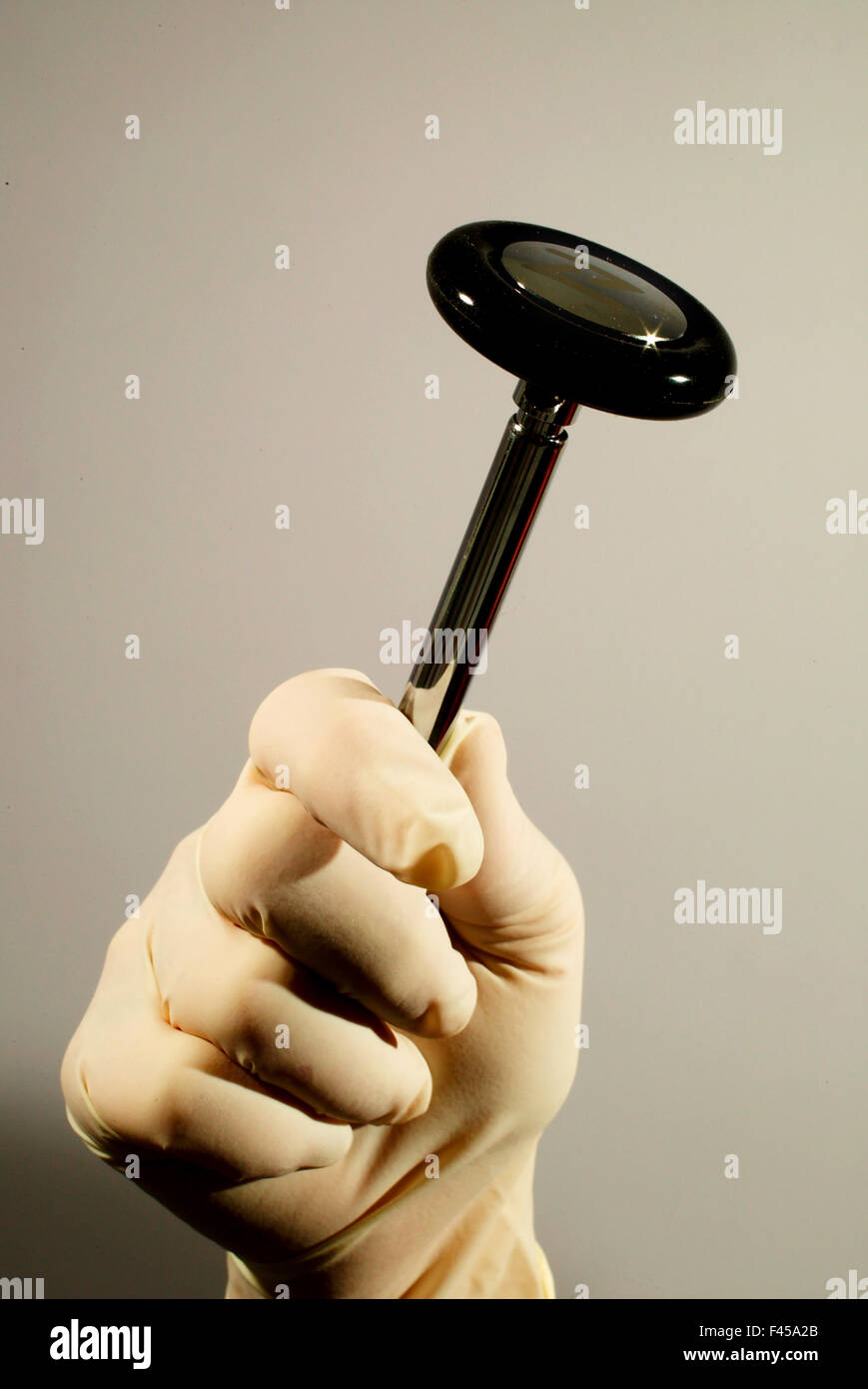 A hand in a rubber surgical glove holds a circular Bakinski reflex hammer used by neurologists used to test deep tendon reflexes. Stock Photohttps://www.alamy.com/image-license-details/?v=1https://www.alamy.com/stock-photo-a-hand-in-a-rubber-surgical-glove-holds-a-circular-bakinski-reflex-88628131.html
A hand in a rubber surgical glove holds a circular Bakinski reflex hammer used by neurologists used to test deep tendon reflexes. Stock Photohttps://www.alamy.com/image-license-details/?v=1https://www.alamy.com/stock-photo-a-hand-in-a-rubber-surgical-glove-holds-a-circular-bakinski-reflex-88628131.htmlRMF45A2B–A hand in a rubber surgical glove holds a circular Bakinski reflex hammer used by neurologists used to test deep tendon reflexes.
 Sleeping baby Stock Photohttps://www.alamy.com/image-license-details/?v=1https://www.alamy.com/sleeping-baby-image607429638.html
Sleeping baby Stock Photohttps://www.alamy.com/image-license-details/?v=1https://www.alamy.com/sleeping-baby-image607429638.htmlRM2X86PKJ–Sleeping baby
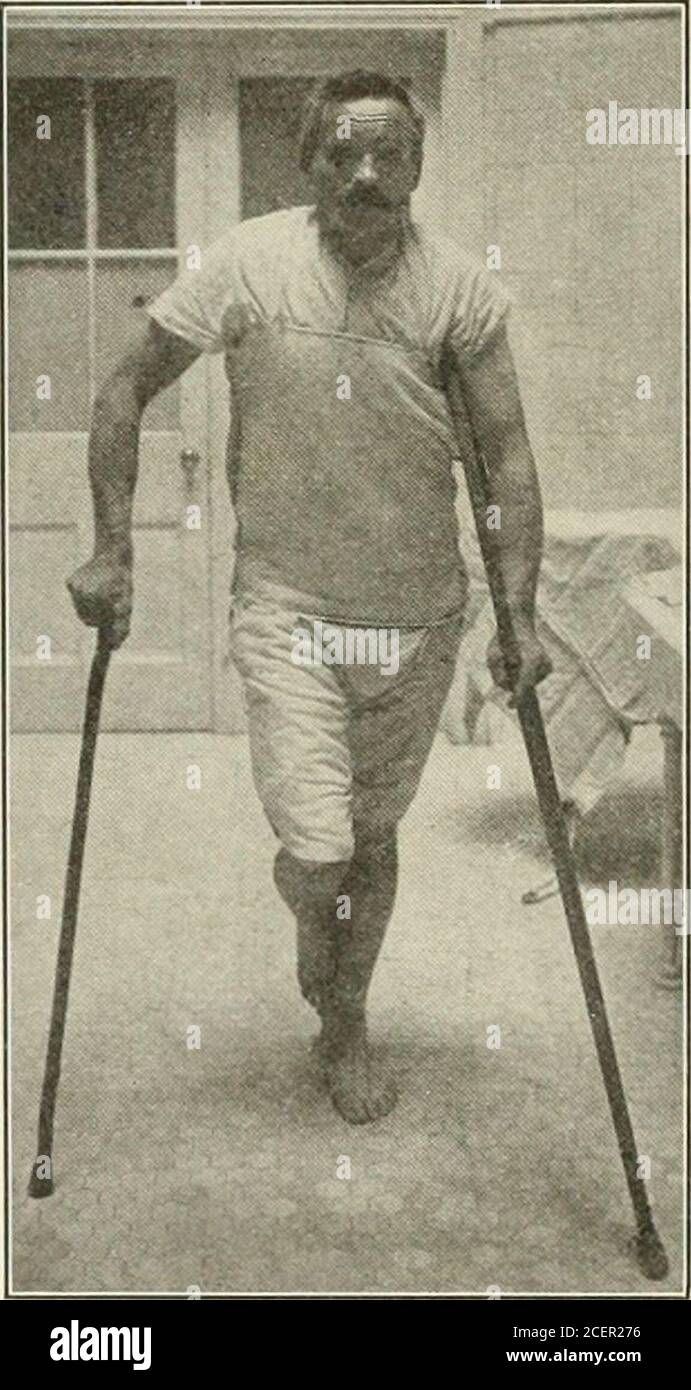 . Contributions from the Department of Neurology and the Laboratory of Neuropathology (reprints). Fig. 1.—Photograph taken before the operation. Neither heelcould be placed upon the ground, and the toes of one foot were broughtwith great difficulty from behind the heel of the other foot. persistent ankle clonus, and Babinski reflex are presenton each side. Touch, pain, and temperature .sensationsare normal in each lower limb. The cremasteric reflex isprompt on each side. The sense of position is normalin each great toe. He has control over the bladder and rectum. He is unable to walk without s Stock Photohttps://www.alamy.com/image-license-details/?v=1https://www.alamy.com/contributions-from-the-department-of-neurology-and-the-laboratory-of-neuropathology-reprints-fig-1photograph-taken-before-the-operation-neither-heelcould-be-placed-upon-the-ground-and-the-toes-of-one-foot-were-broughtwith-great-difficulty-from-behind-the-heel-of-the-other-foot-persistent-ankle-clonus-and-babinski-reflex-are-presenton-each-side-touch-pain-and-temperature-sensationsare-normal-in-each-lower-limb-the-cremasteric-reflex-isprompt-on-each-side-the-sense-of-position-is-normalin-each-great-toe-he-has-control-over-the-bladder-and-rectum-he-is-unable-to-walk-without-s-image370529578.html
. Contributions from the Department of Neurology and the Laboratory of Neuropathology (reprints). Fig. 1.—Photograph taken before the operation. Neither heelcould be placed upon the ground, and the toes of one foot were broughtwith great difficulty from behind the heel of the other foot. persistent ankle clonus, and Babinski reflex are presenton each side. Touch, pain, and temperature .sensationsare normal in each lower limb. The cremasteric reflex isprompt on each side. The sense of position is normalin each great toe. He has control over the bladder and rectum. He is unable to walk without s Stock Photohttps://www.alamy.com/image-license-details/?v=1https://www.alamy.com/contributions-from-the-department-of-neurology-and-the-laboratory-of-neuropathology-reprints-fig-1photograph-taken-before-the-operation-neither-heelcould-be-placed-upon-the-ground-and-the-toes-of-one-foot-were-broughtwith-great-difficulty-from-behind-the-heel-of-the-other-foot-persistent-ankle-clonus-and-babinski-reflex-are-presenton-each-side-touch-pain-and-temperature-sensationsare-normal-in-each-lower-limb-the-cremasteric-reflex-isprompt-on-each-side-the-sense-of-position-is-normalin-each-great-toe-he-has-control-over-the-bladder-and-rectum-he-is-unable-to-walk-without-s-image370529578.htmlRM2CER276–. Contributions from the Department of Neurology and the Laboratory of Neuropathology (reprints). Fig. 1.—Photograph taken before the operation. Neither heelcould be placed upon the ground, and the toes of one foot were broughtwith great difficulty from behind the heel of the other foot. persistent ankle clonus, and Babinski reflex are presenton each side. Touch, pain, and temperature .sensationsare normal in each lower limb. The cremasteric reflex isprompt on each side. The sense of position is normalin each great toe. He has control over the bladder and rectum. He is unable to walk without s
 Father holding newborn baby Stock Photohttps://www.alamy.com/image-license-details/?v=1https://www.alamy.com/father-holding-newborn-baby-image607429569.html
Father holding newborn baby Stock Photohttps://www.alamy.com/image-license-details/?v=1https://www.alamy.com/father-holding-newborn-baby-image607429569.htmlRM2X86PH5–Father holding newborn baby
 . Contributions from the Department of Neurology and the Laboratory of Neuropathology (reprints). slightly relaxed, as it is prevented on this sidebecause of the rigidity of the muscles. Ankle clonus is not ob-tained on either side. Achilles tendon reflex is not obtained oneither side. The Babinski reflex is present and typical on theright side, but is uncertain on the left side. The movements arefree in all parts of the lower limbs, and resistance to passivemovements is good in these limbs. Involuntary jerkings of thelower limbs occur, especially of the right lower limb. He is ableto stand an Stock Photohttps://www.alamy.com/image-license-details/?v=1https://www.alamy.com/contributions-from-the-department-of-neurology-and-the-laboratory-of-neuropathology-reprints-slightly-relaxed-as-it-is-prevented-on-this-sidebecause-of-the-rigidity-of-the-muscles-ankle-clonus-is-not-ob-tained-on-either-side-achilles-tendon-reflex-is-not-obtained-oneither-side-the-babinski-reflex-is-present-and-typical-on-theright-side-but-is-uncertain-on-the-left-side-the-movements-arefree-in-all-parts-of-the-lower-limbs-and-resistance-to-passivemovements-is-good-in-these-limbs-involuntary-jerkings-of-thelower-limbs-occur-especially-of-the-right-lower-limb-he-is-ableto-stand-an-image370529873.html
. Contributions from the Department of Neurology and the Laboratory of Neuropathology (reprints). slightly relaxed, as it is prevented on this sidebecause of the rigidity of the muscles. Ankle clonus is not ob-tained on either side. Achilles tendon reflex is not obtained oneither side. The Babinski reflex is present and typical on theright side, but is uncertain on the left side. The movements arefree in all parts of the lower limbs, and resistance to passivemovements is good in these limbs. Involuntary jerkings of thelower limbs occur, especially of the right lower limb. He is ableto stand an Stock Photohttps://www.alamy.com/image-license-details/?v=1https://www.alamy.com/contributions-from-the-department-of-neurology-and-the-laboratory-of-neuropathology-reprints-slightly-relaxed-as-it-is-prevented-on-this-sidebecause-of-the-rigidity-of-the-muscles-ankle-clonus-is-not-ob-tained-on-either-side-achilles-tendon-reflex-is-not-obtained-oneither-side-the-babinski-reflex-is-present-and-typical-on-theright-side-but-is-uncertain-on-the-left-side-the-movements-arefree-in-all-parts-of-the-lower-limbs-and-resistance-to-passivemovements-is-good-in-these-limbs-involuntary-jerkings-of-thelower-limbs-occur-especially-of-the-right-lower-limb-he-is-ableto-stand-an-image370529873.htmlRM2CER2HN–. Contributions from the Department of Neurology and the Laboratory of Neuropathology (reprints). slightly relaxed, as it is prevented on this sidebecause of the rigidity of the muscles. Ankle clonus is not ob-tained on either side. Achilles tendon reflex is not obtained oneither side. The Babinski reflex is present and typical on theright side, but is uncertain on the left side. The movements arefree in all parts of the lower limbs, and resistance to passivemovements is good in these limbs. Involuntary jerkings of thelower limbs occur, especially of the right lower limb. He is ableto stand an
 Parents laid with newborn baby Stock Photohttps://www.alamy.com/image-license-details/?v=1https://www.alamy.com/parents-laid-with-newborn-baby-image607429627.html
Parents laid with newborn baby Stock Photohttps://www.alamy.com/image-license-details/?v=1https://www.alamy.com/parents-laid-with-newborn-baby-image607429627.htmlRM2X86PK7–Parents laid with newborn baby
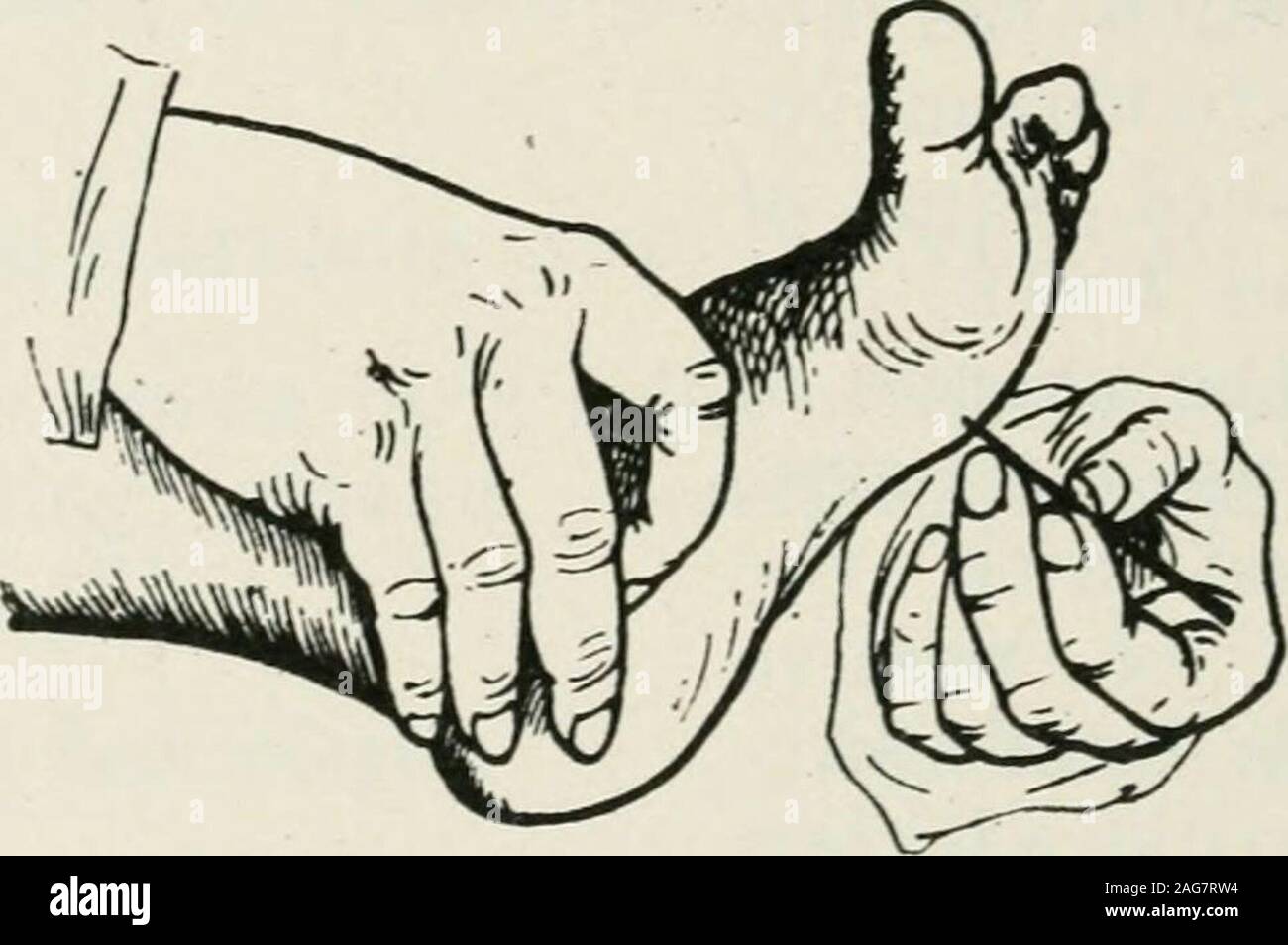 . Medical and surgical therapy. Fig. 16.—Normal plantar cutaneous reflex.. Fig. 17.—Extensor response (Babinski) (165, 167). Stock Photohttps://www.alamy.com/image-license-details/?v=1https://www.alamy.com/medical-and-surgical-therapy-fig-16normal-plantar-cutaneous-reflex-fig-17extensor-response-babinski-165-167-image337003888.html
. Medical and surgical therapy. Fig. 16.—Normal plantar cutaneous reflex.. Fig. 17.—Extensor response (Babinski) (165, 167). Stock Photohttps://www.alamy.com/image-license-details/?v=1https://www.alamy.com/medical-and-surgical-therapy-fig-16normal-plantar-cutaneous-reflex-fig-17extensor-response-babinski-165-167-image337003888.htmlRM2AG7RW4–. Medical and surgical therapy. Fig. 16.—Normal plantar cutaneous reflex.. Fig. 17.—Extensor response (Babinski) (165, 167).
 Baby sleeping next to mother Stock Photohttps://www.alamy.com/image-license-details/?v=1https://www.alamy.com/baby-sleeping-next-to-mother-image607429641.html
Baby sleeping next to mother Stock Photohttps://www.alamy.com/image-license-details/?v=1https://www.alamy.com/baby-sleeping-next-to-mother-image607429641.htmlRM2X86PKN–Baby sleeping next to mother
 Medical and surgical therapy . Fig. 16.—Normal plantar cutaneous reflex.. Fig. 17.—Extensor response (Babinski) (165, 167). Stock Photohttps://www.alamy.com/image-license-details/?v=1https://www.alamy.com/medical-and-surgical-therapy-fig-16normal-plantar-cutaneous-reflex-fig-17extensor-response-babinski-165-167-image339327260.html
Medical and surgical therapy . Fig. 16.—Normal plantar cutaneous reflex.. Fig. 17.—Extensor response (Babinski) (165, 167). Stock Photohttps://www.alamy.com/image-license-details/?v=1https://www.alamy.com/medical-and-surgical-therapy-fig-16normal-plantar-cutaneous-reflex-fig-17extensor-response-babinski-165-167-image339327260.htmlRM2AM1KAM–Medical and surgical therapy . Fig. 16.—Normal plantar cutaneous reflex.. Fig. 17.—Extensor response (Babinski) (165, 167).
 Baby sleeping next to mother Stock Photohttps://www.alamy.com/image-license-details/?v=1https://www.alamy.com/baby-sleeping-next-to-mother-image607429640.html
Baby sleeping next to mother Stock Photohttps://www.alamy.com/image-license-details/?v=1https://www.alamy.com/baby-sleeping-next-to-mother-image607429640.htmlRM2X86PKM–Baby sleeping next to mother
 . Medical and surgical therapy. Fig. 20.—Platysma sign in left hemiplegia.. Fig. 21.—Abduction of the toes associated with combined flexionof the thigh and trunk in right hemiplegia (Babinski) (171). 598 REFLEX NERVOUS DISORDERS ing of the eyebrow, and inthe upper limb by exag-gerated passive flexion ofthe forearm, and by thesigyi of pronation (the handwhen left to itself assumesa position of pronation). 6. The tendon and bonereflexes are frequentlyaffected at the onset, whenthey may be lost, dim-inished or exaggerated.Later, they are almostalways exaggerated, andin many cases there isankle cl Stock Photohttps://www.alamy.com/image-license-details/?v=1https://www.alamy.com/medical-and-surgical-therapy-fig-20platysma-sign-in-left-hemiplegia-fig-21abduction-of-the-toes-associated-with-combined-flexionof-the-thigh-and-trunk-in-right-hemiplegia-babinski-171-598-reflex-nervous-disorders-ing-of-the-eyebrow-and-inthe-upper-limb-by-exag-gerated-passive-flexion-ofthe-forearm-and-by-thesigyi-of-pronation-the-handwhen-left-to-itself-assumesa-position-of-pronation-6-the-tendon-and-bonereflexes-are-frequentlyaffected-at-the-onset-whenthey-may-be-lost-dim-inished-or-exaggeratedlater-they-are-almostalways-exaggerated-andin-many-cases-there-isankle-cl-image337002676.html
. Medical and surgical therapy. Fig. 20.—Platysma sign in left hemiplegia.. Fig. 21.—Abduction of the toes associated with combined flexionof the thigh and trunk in right hemiplegia (Babinski) (171). 598 REFLEX NERVOUS DISORDERS ing of the eyebrow, and inthe upper limb by exag-gerated passive flexion ofthe forearm, and by thesigyi of pronation (the handwhen left to itself assumesa position of pronation). 6. The tendon and bonereflexes are frequentlyaffected at the onset, whenthey may be lost, dim-inished or exaggerated.Later, they are almostalways exaggerated, andin many cases there isankle cl Stock Photohttps://www.alamy.com/image-license-details/?v=1https://www.alamy.com/medical-and-surgical-therapy-fig-20platysma-sign-in-left-hemiplegia-fig-21abduction-of-the-toes-associated-with-combined-flexionof-the-thigh-and-trunk-in-right-hemiplegia-babinski-171-598-reflex-nervous-disorders-ing-of-the-eyebrow-and-inthe-upper-limb-by-exag-gerated-passive-flexion-ofthe-forearm-and-by-thesigyi-of-pronation-the-handwhen-left-to-itself-assumesa-position-of-pronation-6-the-tendon-and-bonereflexes-are-frequentlyaffected-at-the-onset-whenthey-may-be-lost-dim-inished-or-exaggeratedlater-they-are-almostalways-exaggerated-andin-many-cases-there-isankle-cl-image337002676.htmlRM2AG7P9T–. Medical and surgical therapy. Fig. 20.—Platysma sign in left hemiplegia.. Fig. 21.—Abduction of the toes associated with combined flexionof the thigh and trunk in right hemiplegia (Babinski) (171). 598 REFLEX NERVOUS DISORDERS ing of the eyebrow, and inthe upper limb by exag-gerated passive flexion ofthe forearm, and by thesigyi of pronation (the handwhen left to itself assumesa position of pronation). 6. The tendon and bonereflexes are frequentlyaffected at the onset, whenthey may be lost, dim-inished or exaggerated.Later, they are almostalways exaggerated, andin many cases there isankle cl
 Baby sleeping next to mother Stock Photohttps://www.alamy.com/image-license-details/?v=1https://www.alamy.com/baby-sleeping-next-to-mother-image607429645.html
Baby sleeping next to mother Stock Photohttps://www.alamy.com/image-license-details/?v=1https://www.alamy.com/baby-sleeping-next-to-mother-image607429645.htmlRM2X86PKW–Baby sleeping next to mother
 Medical and surgical therapy . Fig. 20.—Platysma sign in left hemiplegia.. Fig. 21.—Abduction of the toes associated with combined flexionof the thigh and trunk in right hemiplegia (Babinski) (171). 598 REFLEX NERVOUS DISORDERS ing of the eyebrow, and inthe upper limb by exag-gerated passive flexion ofthe forearm, and by thesign of pronation (the handwhen left to itself assumesa position of pronation). 6. The tendon and bonereflexes are frequentlyaffected at the onset, whenthey may be lost, dim-inished or exaggerated.Later, they are almostalways exaggerated, andin many cases there isankle clon Stock Photohttps://www.alamy.com/image-license-details/?v=1https://www.alamy.com/medical-and-surgical-therapy-fig-20platysma-sign-in-left-hemiplegia-fig-21abduction-of-the-toes-associated-with-combined-flexionof-the-thigh-and-trunk-in-right-hemiplegia-babinski-171-598-reflex-nervous-disorders-ing-of-the-eyebrow-and-inthe-upper-limb-by-exag-gerated-passive-flexion-ofthe-forearm-and-by-thesign-of-pronation-the-handwhen-left-to-itself-assumesa-position-of-pronation-6-the-tendon-and-bonereflexes-are-frequentlyaffected-at-the-onset-whenthey-may-be-lost-dim-inished-or-exaggeratedlater-they-are-almostalways-exaggerated-andin-many-cases-there-isankle-clon-image339325570.html
Medical and surgical therapy . Fig. 20.—Platysma sign in left hemiplegia.. Fig. 21.—Abduction of the toes associated with combined flexionof the thigh and trunk in right hemiplegia (Babinski) (171). 598 REFLEX NERVOUS DISORDERS ing of the eyebrow, and inthe upper limb by exag-gerated passive flexion ofthe forearm, and by thesign of pronation (the handwhen left to itself assumesa position of pronation). 6. The tendon and bonereflexes are frequentlyaffected at the onset, whenthey may be lost, dim-inished or exaggerated.Later, they are almostalways exaggerated, andin many cases there isankle clon Stock Photohttps://www.alamy.com/image-license-details/?v=1https://www.alamy.com/medical-and-surgical-therapy-fig-20platysma-sign-in-left-hemiplegia-fig-21abduction-of-the-toes-associated-with-combined-flexionof-the-thigh-and-trunk-in-right-hemiplegia-babinski-171-598-reflex-nervous-disorders-ing-of-the-eyebrow-and-inthe-upper-limb-by-exag-gerated-passive-flexion-ofthe-forearm-and-by-thesign-of-pronation-the-handwhen-left-to-itself-assumesa-position-of-pronation-6-the-tendon-and-bonereflexes-are-frequentlyaffected-at-the-onset-whenthey-may-be-lost-dim-inished-or-exaggeratedlater-they-are-almostalways-exaggerated-andin-many-cases-there-isankle-clon-image339325570.htmlRM2AM1H6A–Medical and surgical therapy . Fig. 20.—Platysma sign in left hemiplegia.. Fig. 21.—Abduction of the toes associated with combined flexionof the thigh and trunk in right hemiplegia (Babinski) (171). 598 REFLEX NERVOUS DISORDERS ing of the eyebrow, and inthe upper limb by exag-gerated passive flexion ofthe forearm, and by thesign of pronation (the handwhen left to itself assumesa position of pronation). 6. The tendon and bonereflexes are frequentlyaffected at the onset, whenthey may be lost, dim-inished or exaggerated.Later, they are almostalways exaggerated, andin many cases there isankle clon
 Woman smoking next to newborn baby Stock Photohttps://www.alamy.com/image-license-details/?v=1https://www.alamy.com/woman-smoking-next-to-newborn-baby-image607429608.html
Woman smoking next to newborn baby Stock Photohttps://www.alamy.com/image-license-details/?v=1https://www.alamy.com/woman-smoking-next-to-newborn-baby-image607429608.htmlRM2X86PJG–Woman smoking next to newborn baby
 Mother holding yawning baby Stock Photohttps://www.alamy.com/image-license-details/?v=1https://www.alamy.com/mother-holding-yawning-baby-image607429461.html
Mother holding yawning baby Stock Photohttps://www.alamy.com/image-license-details/?v=1https://www.alamy.com/mother-holding-yawning-baby-image607429461.htmlRM2X86PD9–Mother holding yawning baby
 Woman smoking next to newborn baby Stock Photohttps://www.alamy.com/image-license-details/?v=1https://www.alamy.com/woman-smoking-next-to-newborn-baby-image607429609.html
Woman smoking next to newborn baby Stock Photohttps://www.alamy.com/image-license-details/?v=1https://www.alamy.com/woman-smoking-next-to-newborn-baby-image607429609.htmlRM2X86PJH–Woman smoking next to newborn baby
 Baby sleeping next to mother Stock Photohttps://www.alamy.com/image-license-details/?v=1https://www.alamy.com/baby-sleeping-next-to-mother-image607429635.html
Baby sleeping next to mother Stock Photohttps://www.alamy.com/image-license-details/?v=1https://www.alamy.com/baby-sleeping-next-to-mother-image607429635.htmlRM2X86PKF–Baby sleeping next to mother
 Parents laid with newborn baby Stock Photohttps://www.alamy.com/image-license-details/?v=1https://www.alamy.com/parents-laid-with-newborn-baby-image607429629.html
Parents laid with newborn baby Stock Photohttps://www.alamy.com/image-license-details/?v=1https://www.alamy.com/parents-laid-with-newborn-baby-image607429629.htmlRM2X86PK9–Parents laid with newborn baby
 Woman smoking next to newborn baby Stock Photohttps://www.alamy.com/image-license-details/?v=1https://www.alamy.com/woman-smoking-next-to-newborn-baby-image607429568.html
Woman smoking next to newborn baby Stock Photohttps://www.alamy.com/image-license-details/?v=1https://www.alamy.com/woman-smoking-next-to-newborn-baby-image607429568.htmlRM2X86PH4–Woman smoking next to newborn baby
 Parents laid with newborn baby Stock Photohttps://www.alamy.com/image-license-details/?v=1https://www.alamy.com/parents-laid-with-newborn-baby-image607429633.html
Parents laid with newborn baby Stock Photohttps://www.alamy.com/image-license-details/?v=1https://www.alamy.com/parents-laid-with-newborn-baby-image607429633.htmlRM2X86PKD–Parents laid with newborn baby
 Woman smoking next to newborn baby Stock Photohttps://www.alamy.com/image-license-details/?v=1https://www.alamy.com/woman-smoking-next-to-newborn-baby-image607429565.html
Woman smoking next to newborn baby Stock Photohttps://www.alamy.com/image-license-details/?v=1https://www.alamy.com/woman-smoking-next-to-newborn-baby-image607429565.htmlRM2X86PH1–Woman smoking next to newborn baby
 Woman smoking next to newborn baby Stock Photohttps://www.alamy.com/image-license-details/?v=1https://www.alamy.com/woman-smoking-next-to-newborn-baby-image607429612.html
Woman smoking next to newborn baby Stock Photohttps://www.alamy.com/image-license-details/?v=1https://www.alamy.com/woman-smoking-next-to-newborn-baby-image607429612.htmlRM2X86PJM–Woman smoking next to newborn baby
 Woman smoking next to newborn baby Stock Photohttps://www.alamy.com/image-license-details/?v=1https://www.alamy.com/woman-smoking-next-to-newborn-baby-image607429613.html
Woman smoking next to newborn baby Stock Photohttps://www.alamy.com/image-license-details/?v=1https://www.alamy.com/woman-smoking-next-to-newborn-baby-image607429613.htmlRM2X86PJN–Woman smoking next to newborn baby
 Woman smoking next to newborn baby Stock Photohttps://www.alamy.com/image-license-details/?v=1https://www.alamy.com/woman-smoking-next-to-newborn-baby-image607429564.html
Woman smoking next to newborn baby Stock Photohttps://www.alamy.com/image-license-details/?v=1https://www.alamy.com/woman-smoking-next-to-newborn-baby-image607429564.htmlRM2X86PH0–Woman smoking next to newborn baby
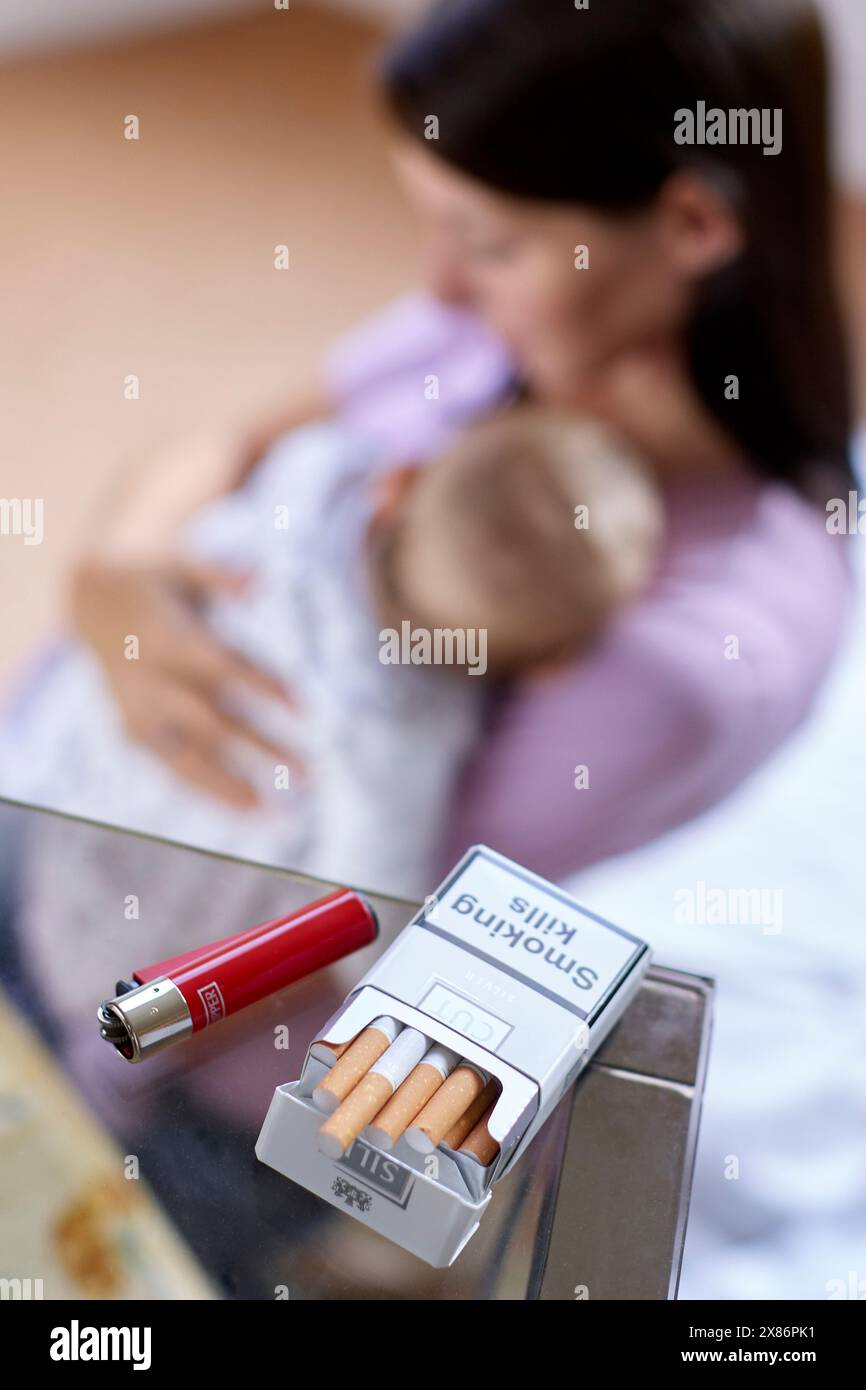 Woman smoking next to newborn baby Stock Photohttps://www.alamy.com/image-license-details/?v=1https://www.alamy.com/woman-smoking-next-to-newborn-baby-image607429621.html
Woman smoking next to newborn baby Stock Photohttps://www.alamy.com/image-license-details/?v=1https://www.alamy.com/woman-smoking-next-to-newborn-baby-image607429621.htmlRM2X86PK1–Woman smoking next to newborn baby
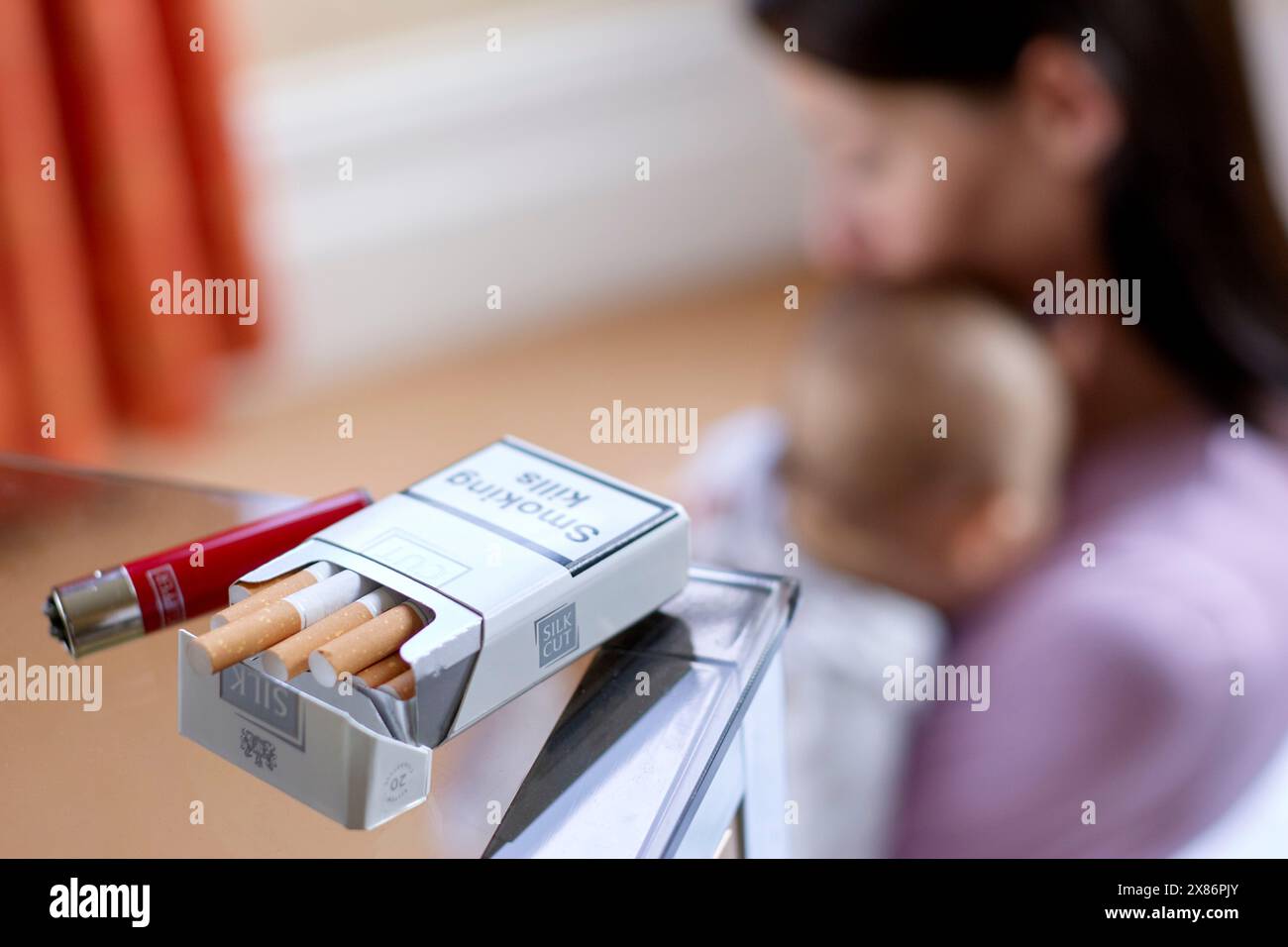 Woman smoking next to newborn baby Stock Photohttps://www.alamy.com/image-license-details/?v=1https://www.alamy.com/woman-smoking-next-to-newborn-baby-image607429619.html
Woman smoking next to newborn baby Stock Photohttps://www.alamy.com/image-license-details/?v=1https://www.alamy.com/woman-smoking-next-to-newborn-baby-image607429619.htmlRM2X86PJY–Woman smoking next to newborn baby
 Woman smoking next to newborn baby Stock Photohttps://www.alamy.com/image-license-details/?v=1https://www.alamy.com/woman-smoking-next-to-newborn-baby-image607429625.html
Woman smoking next to newborn baby Stock Photohttps://www.alamy.com/image-license-details/?v=1https://www.alamy.com/woman-smoking-next-to-newborn-baby-image607429625.htmlRM2X86PK5–Woman smoking next to newborn baby
 Woman smoking next to newborn baby Stock Photohttps://www.alamy.com/image-license-details/?v=1https://www.alamy.com/woman-smoking-next-to-newborn-baby-image607429614.html
Woman smoking next to newborn baby Stock Photohttps://www.alamy.com/image-license-details/?v=1https://www.alamy.com/woman-smoking-next-to-newborn-baby-image607429614.htmlRM2X86PJP–Woman smoking next to newborn baby
 Baby lying asleep Stock Photohttps://www.alamy.com/image-license-details/?v=1https://www.alamy.com/stock-photo-baby-lying-asleep-14147447.html
Baby lying asleep Stock Photohttps://www.alamy.com/image-license-details/?v=1https://www.alamy.com/stock-photo-baby-lying-asleep-14147447.htmlRMAGAC4T–Baby lying asleep
 Baby lying asleep Stock Photohttps://www.alamy.com/image-license-details/?v=1https://www.alamy.com/stock-photo-baby-lying-asleep-14147453.html
Baby lying asleep Stock Photohttps://www.alamy.com/image-license-details/?v=1https://www.alamy.com/stock-photo-baby-lying-asleep-14147453.htmlRMAGAC5J–Baby lying asleep
 Baby lying asleep sleeping Stock Photohttps://www.alamy.com/image-license-details/?v=1https://www.alamy.com/stock-photo-baby-lying-asleep-sleeping-15755206.html
Baby lying asleep sleeping Stock Photohttps://www.alamy.com/image-license-details/?v=1https://www.alamy.com/stock-photo-baby-lying-asleep-sleeping-15755206.htmlRMAPD94R–Baby lying asleep sleeping
 Baby lying asleep sleeping Stock Photohttps://www.alamy.com/image-license-details/?v=1https://www.alamy.com/stock-photo-baby-lying-asleep-sleeping-15767784.html
Baby lying asleep sleeping Stock Photohttps://www.alamy.com/image-license-details/?v=1https://www.alamy.com/stock-photo-baby-lying-asleep-sleeping-15767784.htmlRMAPEJGW–Baby lying asleep sleeping
 Baby lying in cot Stock Photohttps://www.alamy.com/image-license-details/?v=1https://www.alamy.com/stock-photo-baby-lying-in-cot-18096217.html
Baby lying in cot Stock Photohttps://www.alamy.com/image-license-details/?v=1https://www.alamy.com/stock-photo-baby-lying-in-cot-18096217.htmlRMB1C9WD–Baby lying in cot
 Baby lying in cot Stock Photohttps://www.alamy.com/image-license-details/?v=1https://www.alamy.com/stock-photo-baby-lying-in-cot-18096228.html
Baby lying in cot Stock Photohttps://www.alamy.com/image-license-details/?v=1https://www.alamy.com/stock-photo-baby-lying-in-cot-18096228.htmlRMB1C9WT–Baby lying in cot
 Baby lying asleep sleeping Stock Photohttps://www.alamy.com/image-license-details/?v=1https://www.alamy.com/stock-photo-baby-lying-asleep-sleeping-15755141.html
Baby lying asleep sleeping Stock Photohttps://www.alamy.com/image-license-details/?v=1https://www.alamy.com/stock-photo-baby-lying-asleep-sleeping-15755141.htmlRMAPD8YJ–Baby lying asleep sleeping
 Baby lying in cot Stock Photohttps://www.alamy.com/image-license-details/?v=1https://www.alamy.com/stock-photo-baby-lying-in-cot-18096246.html
Baby lying in cot Stock Photohttps://www.alamy.com/image-license-details/?v=1https://www.alamy.com/stock-photo-baby-lying-in-cot-18096246.htmlRMB1C9XE–Baby lying in cot
 Baby lying in cot Stock Photohttps://www.alamy.com/image-license-details/?v=1https://www.alamy.com/stock-photo-baby-lying-in-cot-18099477.html
Baby lying in cot Stock Photohttps://www.alamy.com/image-license-details/?v=1https://www.alamy.com/stock-photo-baby-lying-in-cot-18099477.htmlRMB1CE1W–Baby lying in cot
 Baby lying asleep sleeping Stock Photohttps://www.alamy.com/image-license-details/?v=1https://www.alamy.com/stock-photo-baby-lying-asleep-sleeping-15755221.html
Baby lying asleep sleeping Stock Photohttps://www.alamy.com/image-license-details/?v=1https://www.alamy.com/stock-photo-baby-lying-asleep-sleeping-15755221.htmlRMAPD95X–Baby lying asleep sleeping

